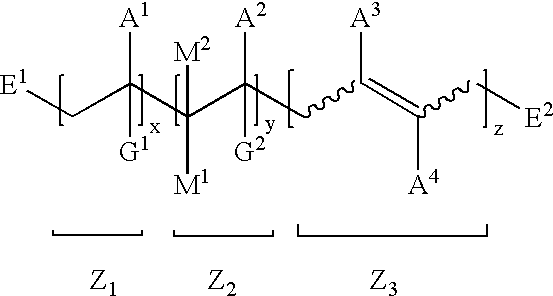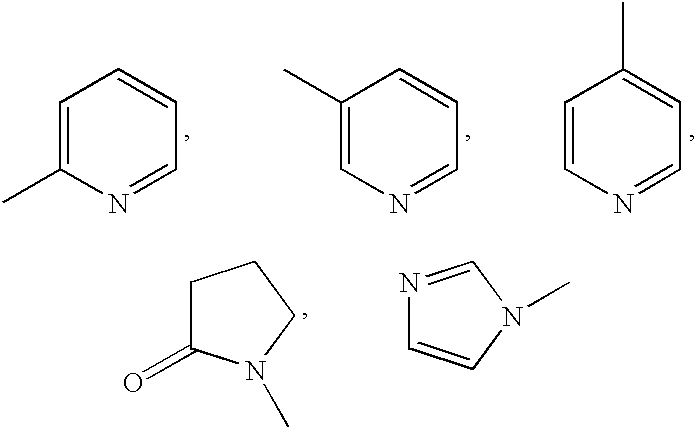Continuous polymerization process and products therefrom
a polymerization process and polymer technology, applied in the direction of detergent compounding agents, detergent compositions, organic additions, etc., can solve the problems of increasing the cost of the process, and high cost of materials, so as to increase the molecular weight of the oligomer, increase the relative amount of by-products, and accelerate the process of invention
Inactive Publication Date: 2003-05-20
ROHM & HAAS CO
View PDF16 Cites 10 Cited by
- Summary
- Abstract
- Description
- Claims
- Application Information
AI Technical Summary
Benefits of technology
The monomers may be polymerized as dilute solutions, although the process does not require solvent, nor is the use of solvents preferred. The reaction mixture may contain one or more solvents at a level of from 0% to 99.5% by weight of the reaction mixture, preferably from 30% to 97% by weight of the reaction mixture, and most preferably from 50% to 95% by weight of the reaction mixture. As the relative amount of one or more solvents in the reaction mixture decreases, particularly below 60%, the molecular weight and the polydispersity of the resulting oligomer mixture increases. Suitable solvents for the process of the present invention are capable of dissolving the one or more monomers, especially under the supercritical fluid conditions of the process, and the oligomers formed therefrom. Suitable solvents for the present invention include, for example, ethers such as tetrahydrofuran, ketones such as acetone; esters such as ethyl acetate; alcohols such as methyl alcohol and butyl alcohol; alkanes such as hexane and heptane; aromatic hydrocarbons such as benzene, toluene and xylene; supercritical fluids such as carbon dioxide; water; and mixtures thereof. Supercritical fluids such as carbon dioxide are particularly useful because the solvent readily is stripped from the product and may be recycled.
The process of the present invention results in oligomers having low molecular weights and narrow polydispersities. Furthermore, embodiments of the process result in products that do not require the removal of organic solvents (if none were used in the process) and are not contaminated with high levels of salt. The process of the present invention may be used to produce oligomers having number average molecular weights below 5,000, preferably below 3,000, and most preferably from 200 to 1,000.
Problems solved by technology
However, production of these low molecular weight polymers has proven to be difficult.
One method of achieving low molecular weight polymers is through the use of efficient chain transfer agents, but this approach has several drawbacks.
This can be undesirable since that structure will have an increasing effect on the properties of the polymer as molecular weight decreases.
These materials are expensive and have objectionable odors associated with their presence.
These also add to the cost of the process, impart functionality to the polymer, may introduce salts into the product, and may necessitate a product separation step.
This approach adds considerably to the cost of production and may result in polymer chain degradation, crosslinking, and high levels of unreacted initiator remaining in the product.
In addition, high levels of initiator may also result in high levels of salt by-products in the polymer mixture which are known to be detrimental to performance in many applications.
However, hydrogen peroxide does not generally decompose efficiently at conventional polymerization temperatures and large amounts must normally be used to generate enough radicals to carry out a polymerization.
Such an approach is unsuitable for some products that cannot tolerate metal ion contaminants in the polymer product, such as pharmaceutical, medical and electronic applications.
In addition, depending on the metal ions used, the product may be discolored due to the presence of the metal ions.
These processes suffer from the same problems as those processes employing high level of metal ions, as described above.
In addition, because the methods employing the metal chelate chain transfer agents undergo .beta.-scission reactions, they are limited to producing oligomers having homomethacrylate backbones.
This process suffers the drawback of being fairly complex, expensive and time-consuming.
However, the neat form of many of the acrylic acid products are solid and, thus, require the addition of a solvent to handle and use the products.
The method is relatively complex.
Because the method is inhibited by the presence of moisture (lowering yield and uniformity of the final product), it is not a viable commercial process.
Method used
the structure of the environmentally friendly knitted fabric provided by the present invention; figure 2 Flow chart of the yarn wrapping machine for environmentally friendly knitted fabrics and storage devices; image 3 Is the parameter map of the yarn covering machine
View moreImage
Smart Image Click on the blue labels to locate them in the text.
Smart ImageViewing Examples
Examples
Experimental program
Comparison scheme
Effect test
examples 1-103
are oligomerizations conducted according to the general procedure outlined above. The reaction conditions and final properties of the oligomers are shown in Table 1.
All of the examples of the invention were liquid, ranging from low viscosity to high viscosity, when provided neat, whether or not the reaction mixture contained the optional solvent during the process of manufacture.
the structure of the environmentally friendly knitted fabric provided by the present invention; figure 2 Flow chart of the yarn wrapping machine for environmentally friendly knitted fabrics and storage devices; image 3 Is the parameter map of the yarn covering machine
Login to View More PUM
| Property | Measurement | Unit |
|---|---|---|
| degree of polymerization | aaaaa | aaaaa |
| molecular weight | aaaaa | aaaaa |
| molecular weight | aaaaa | aaaaa |
Login to View More
Abstract
A continuous process for oligomers which do not contain, as polymerized units, carboxylic acid-containing monomers and their salts, including the steps of:(1) forming a reaction mixture, substantially free of carboxylic acid-containing monomers and their salts, containing:(i) 0.5 to 99.95% by weight of the reaction mixture of at least one ethylenically unsaturated monomer; and(ii) 0.05 to 25% by weight, based on the weight of the ethylenically unsaturated monomer, of at least one free-radical initiator; and(2) continuously passing the reaction mixture through a heated zone wherein the reaction mixture is maintained at a temperature of at least 150° C. and a pressure of at least 30 bars for from 0.1 seconds to 4 minutes to form terminally-unsaturated oligomers.In addition, processes for forming oligomers of vinyl acetate and oligomers of vinyl alcohol are disclosed. Mixtures of fully saturated and terminally unsaturated oligomers are also disclosed.
Description
This invention relates to a continuous polymerization process and products therefrom. In particular, this invention relates to a high temperature, high pressure, continuous polymerization process to produce oligomers. More particularly, this invention relates to a high temperature, high pressure, continuous polymerization process to produce terminally unsaturated and fully saturated oligomers. "Oligomers," as used herein and in the appended claims, refers to polymers having a degree of polymerization ("dP") of less than 50.The art has long sought an inexpensive, efficient and environmentally sound way to produce low molecular weight polymers. However, production of these low molecular weight polymers has proven to be difficult.One method of achieving low molecular weight polymers is through the use of efficient chain transfer agents, but this approach has several drawbacks. First, this approach incorporates the structure of the chain transfer agent into the polymer chain. This can b...
Claims
the structure of the environmentally friendly knitted fabric provided by the present invention; figure 2 Flow chart of the yarn wrapping machine for environmentally friendly knitted fabrics and storage devices; image 3 Is the parameter map of the yarn covering machine
Login to View More Application Information
Patent Timeline
 Login to View More
Login to View More Patent Type & Authority Patents(United States)
IPC IPC(8): C07C43/196C07C43/00C07C69/00C08L21/00C08F2/12C08F20/00C08F20/04C08F2/18C08L101/00C08F290/04C08F290/00C08K5/00C11D3/37C08F220/00C08F220/28C07B37/02C07B35/02C08F2/00C08F2/02C08F4/32C08F8/04
CPCC07C43/196C07C67/347C11D3/3757C08L101/00C08L21/00C08K5/0025C08K5/0016C08F290/046C08F2/02C08F2/18C08F20/04C07C69/604C08F2220/281C07C2103/68C08L2666/02C08L2666/04C07C2603/68C08F220/281
Inventor GREENBLATT, GARY DAVIDLANGE, BARRY CLIFFORDBOWE, MICHAEL DAMIANMERRITT, RICHARD FOSTERWILCZYNSKI, ROBERTLARSON, GARY ROBERTPETROVICH, LORI MARIEWHITMAN, DAVID WILLIAM
Owner ROHM & HAAS CO
Features
- R&D
- Intellectual Property
- Life Sciences
- Materials
- Tech Scout
Why Patsnap Eureka
- Unparalleled Data Quality
- Higher Quality Content
- 60% Fewer Hallucinations
Social media
Patsnap Eureka Blog
Learn More Browse by: Latest US Patents, China's latest patents, Technical Efficacy Thesaurus, Application Domain, Technology Topic, Popular Technical Reports.
© 2025 PatSnap. All rights reserved.Legal|Privacy policy|Modern Slavery Act Transparency Statement|Sitemap|About US| Contact US: help@patsnap.com



